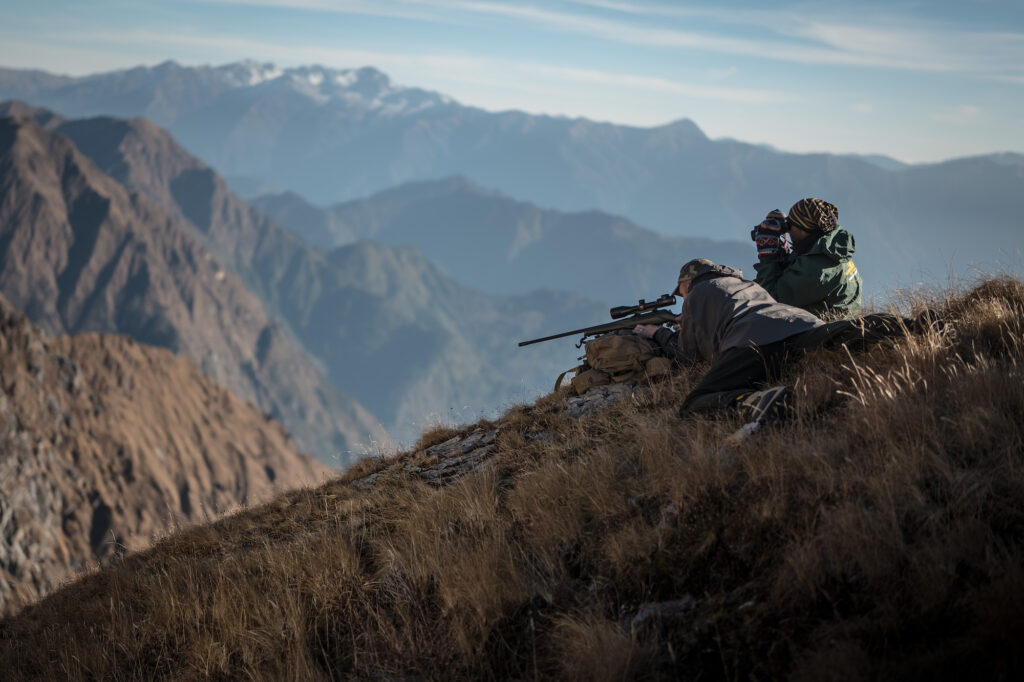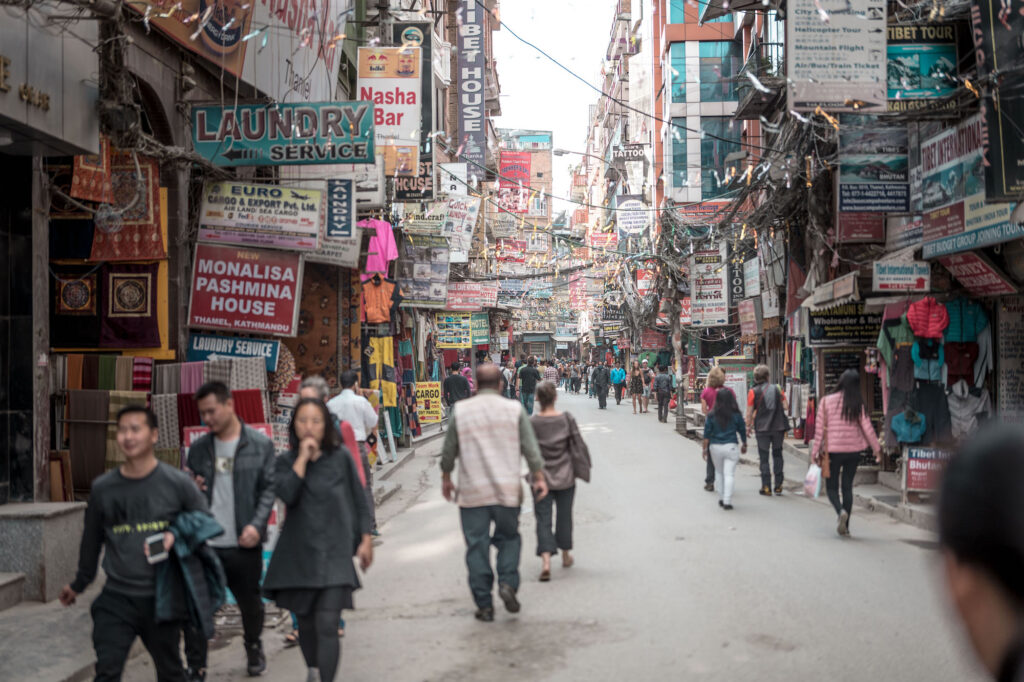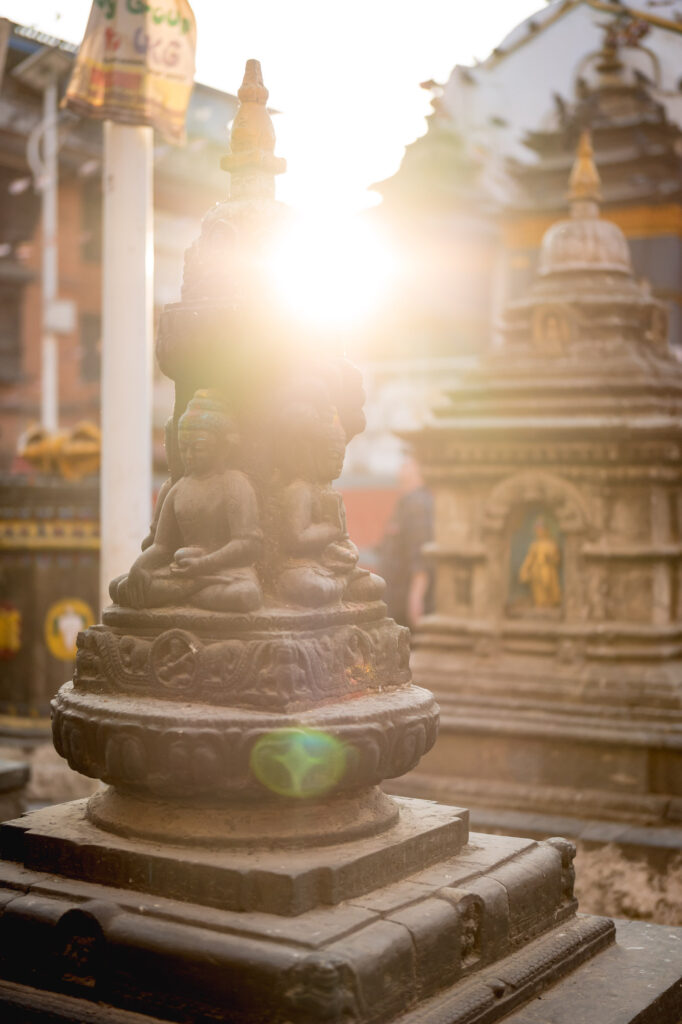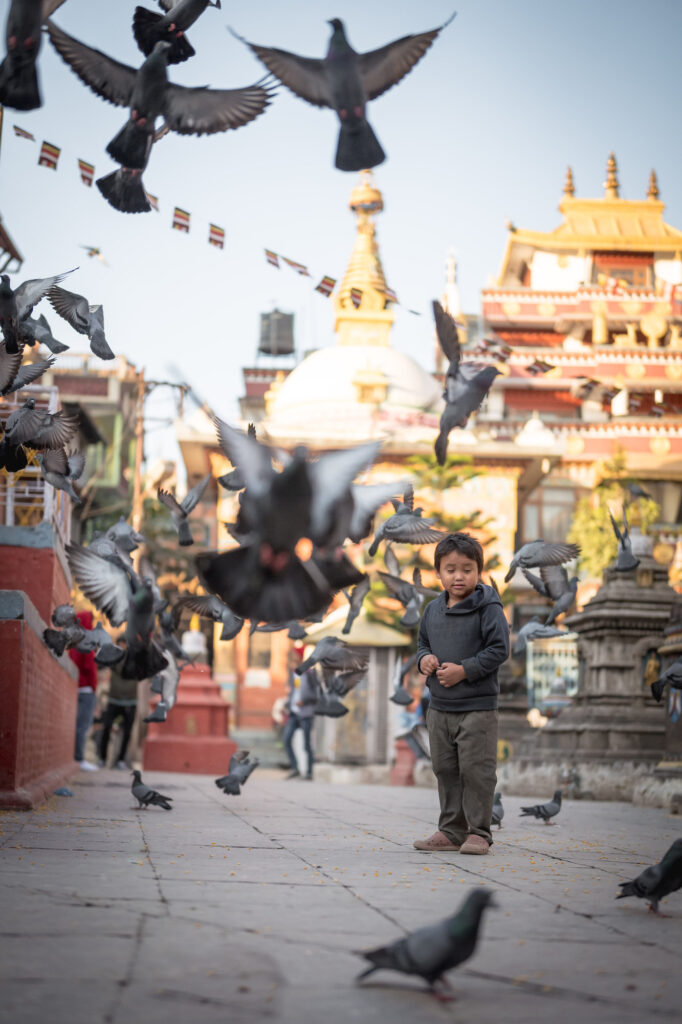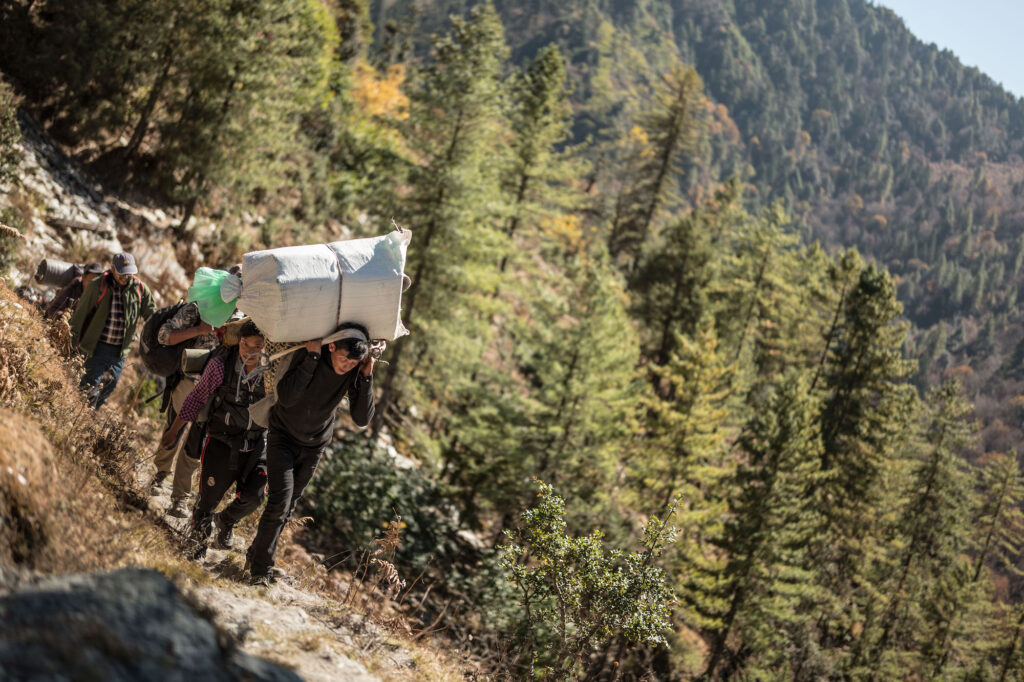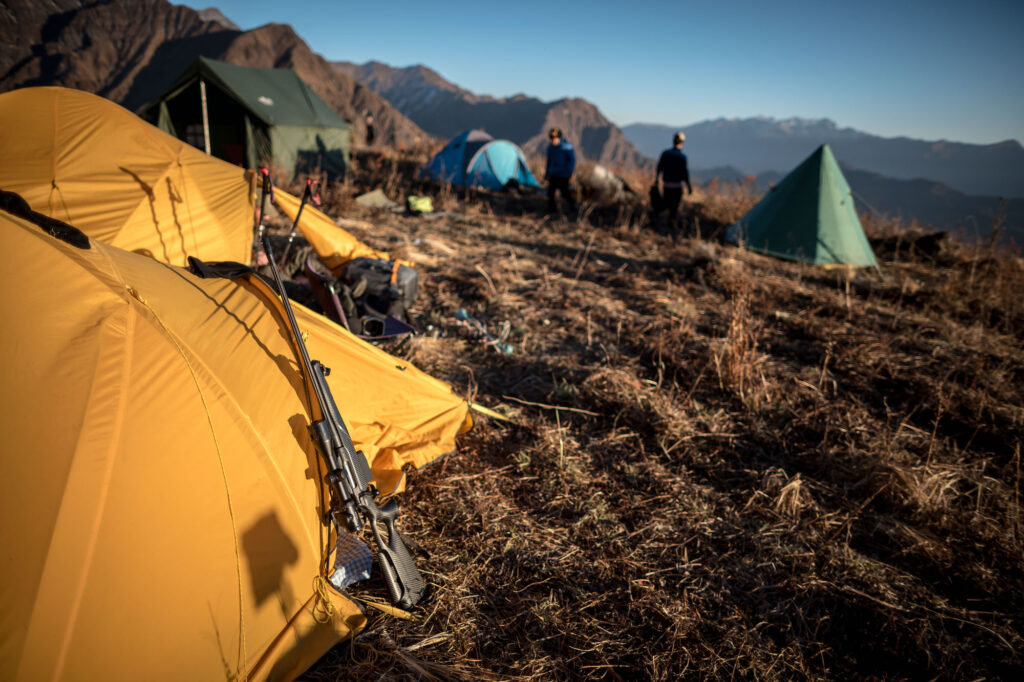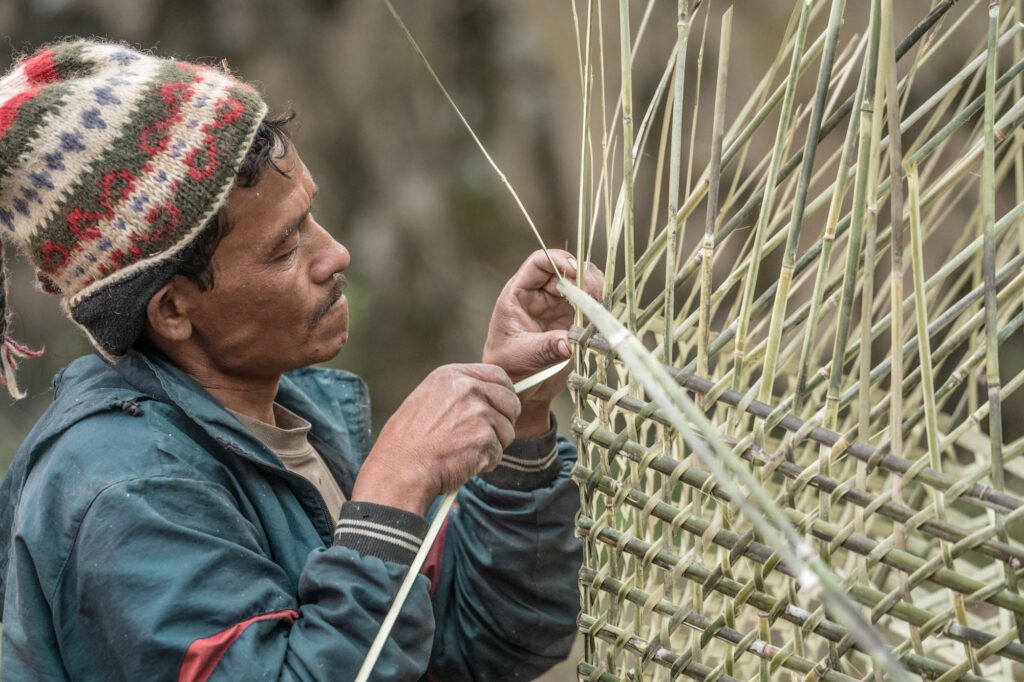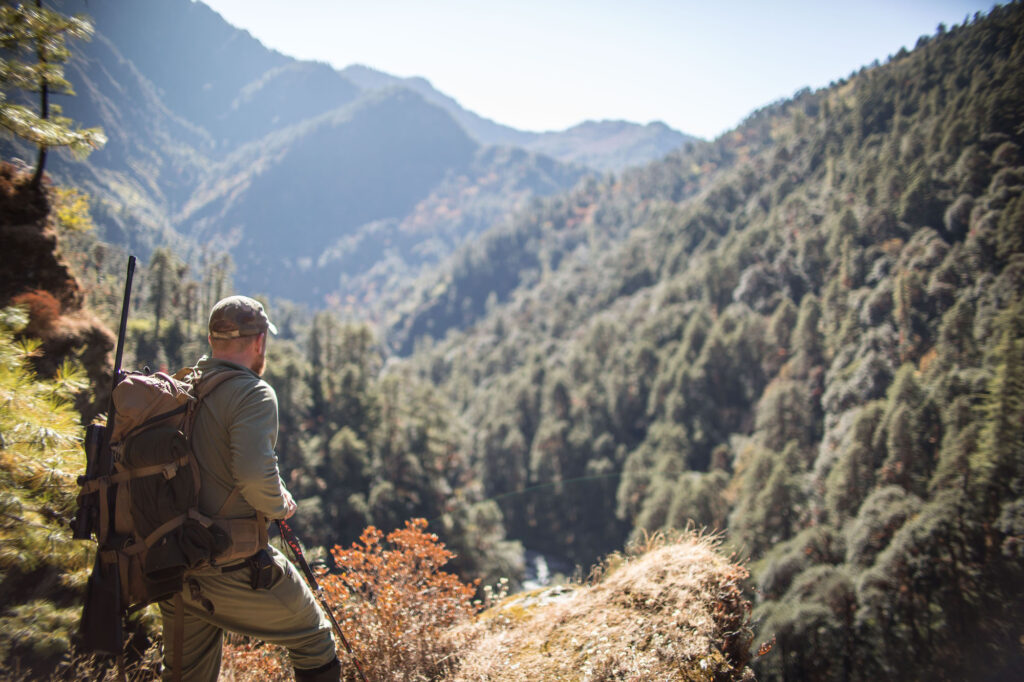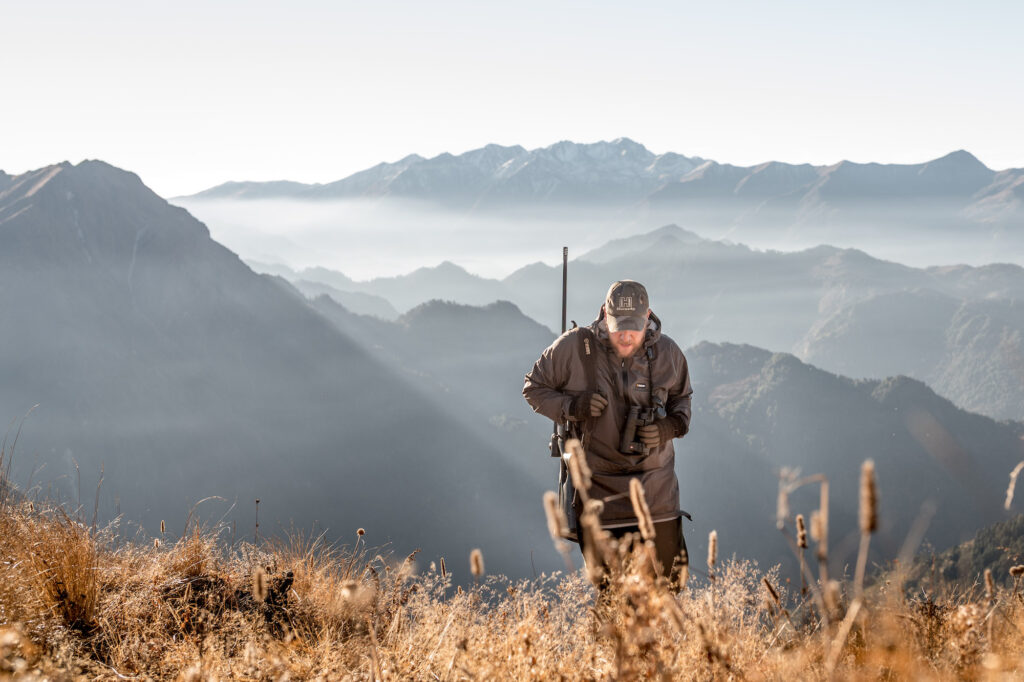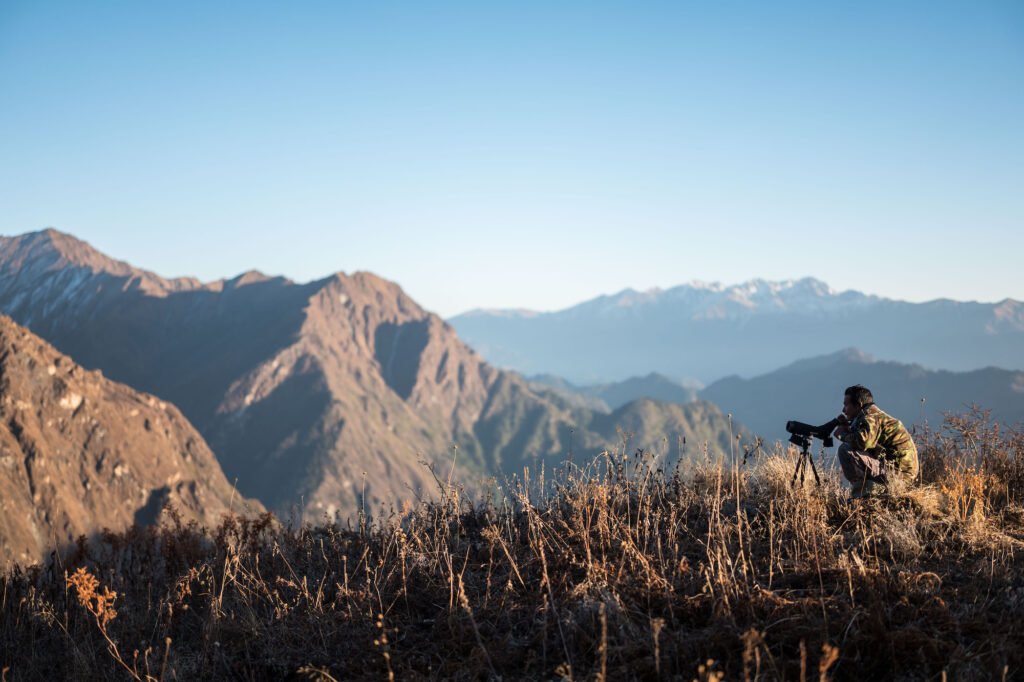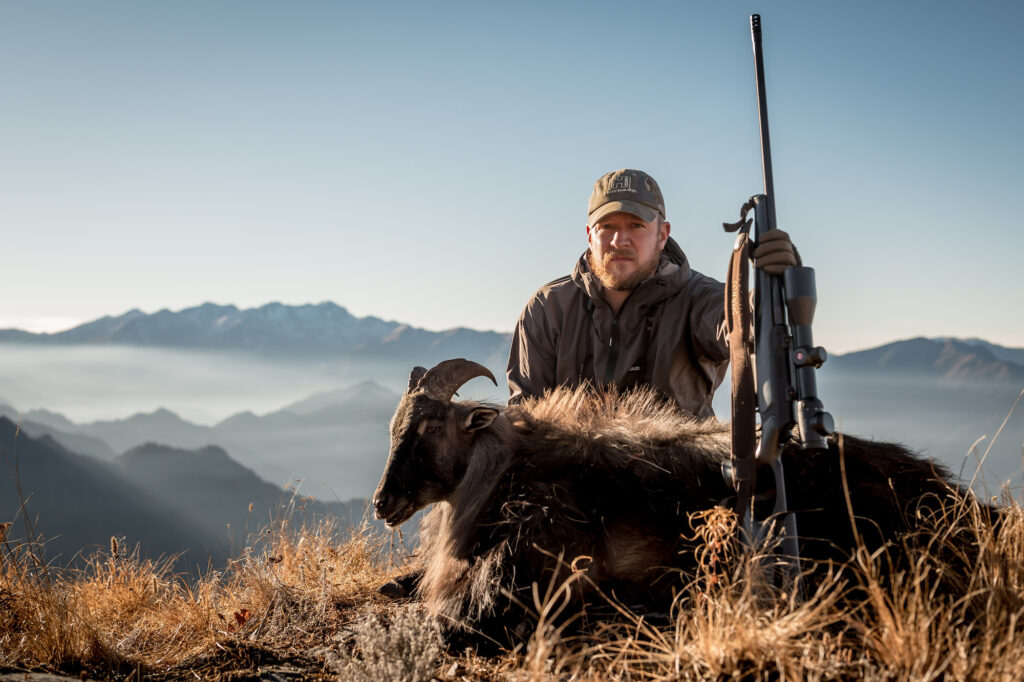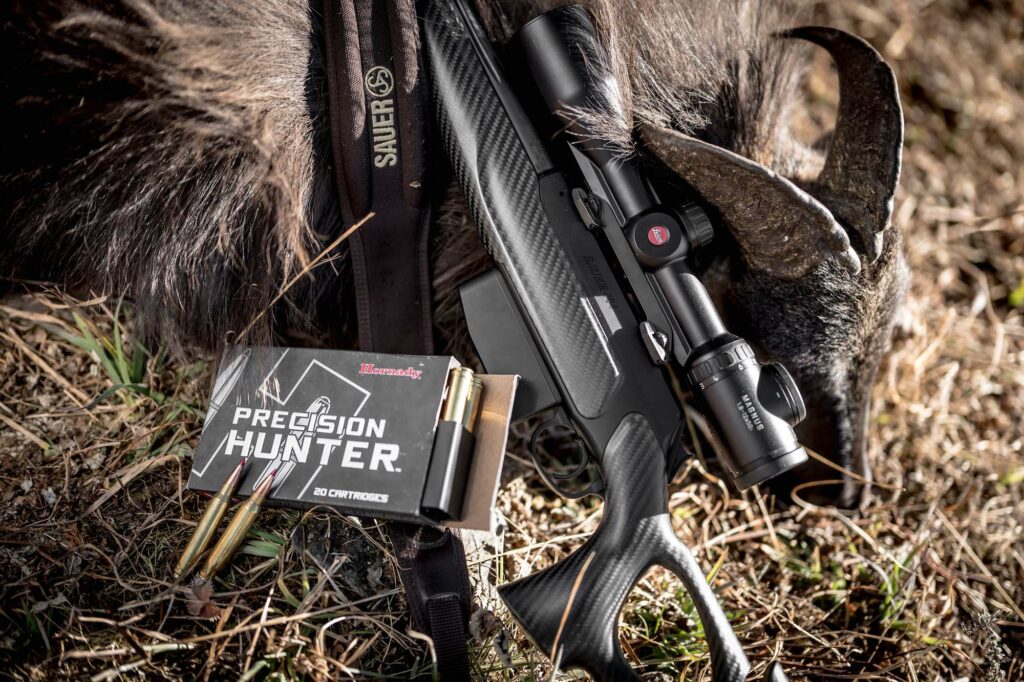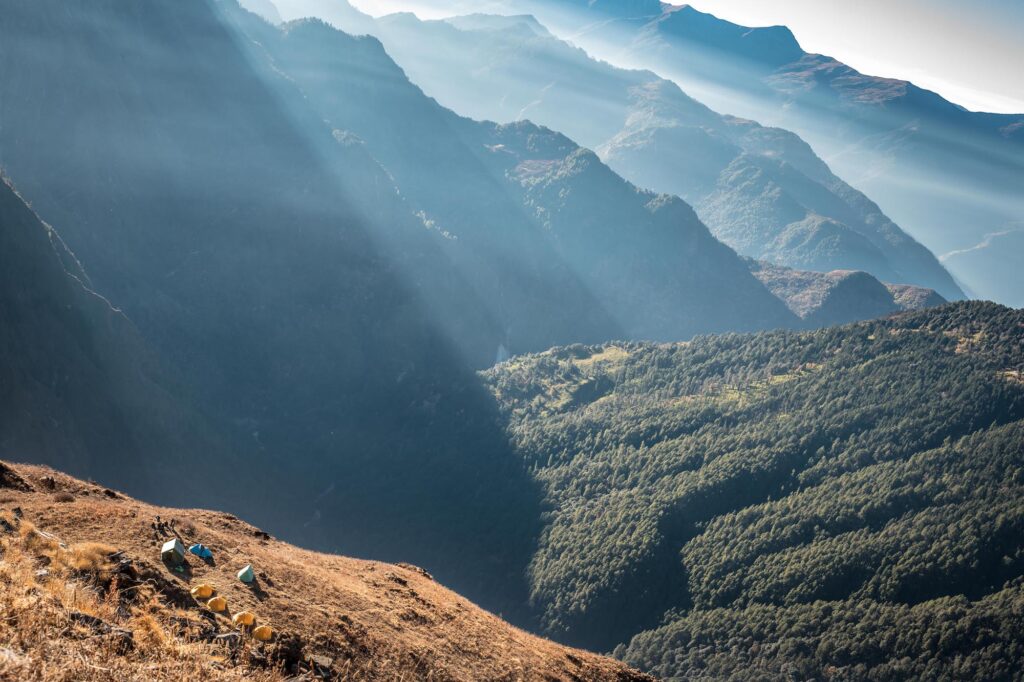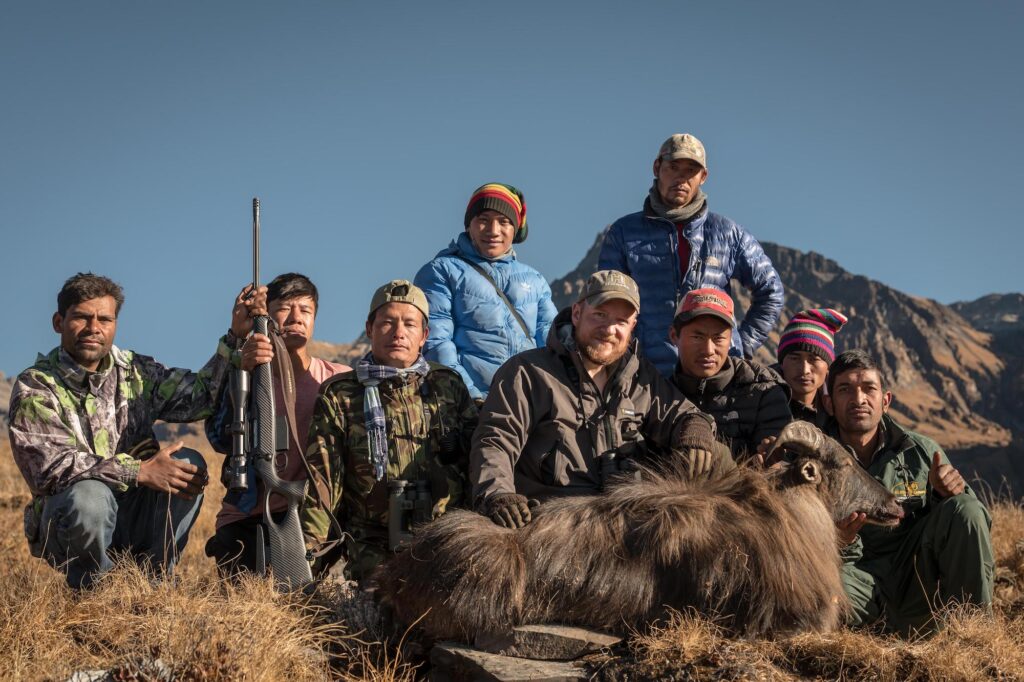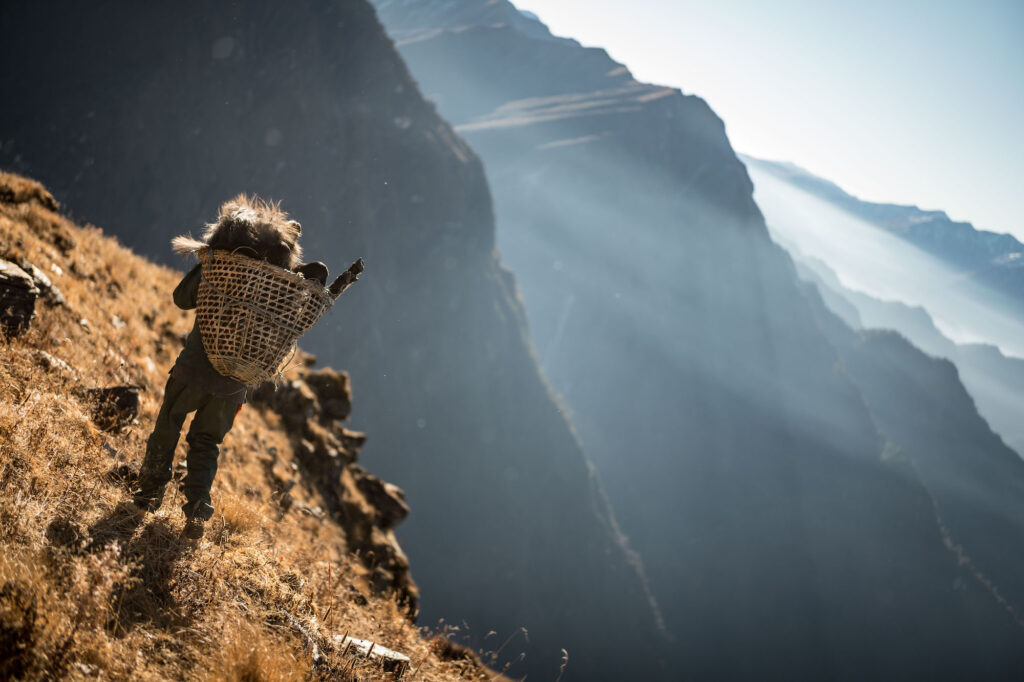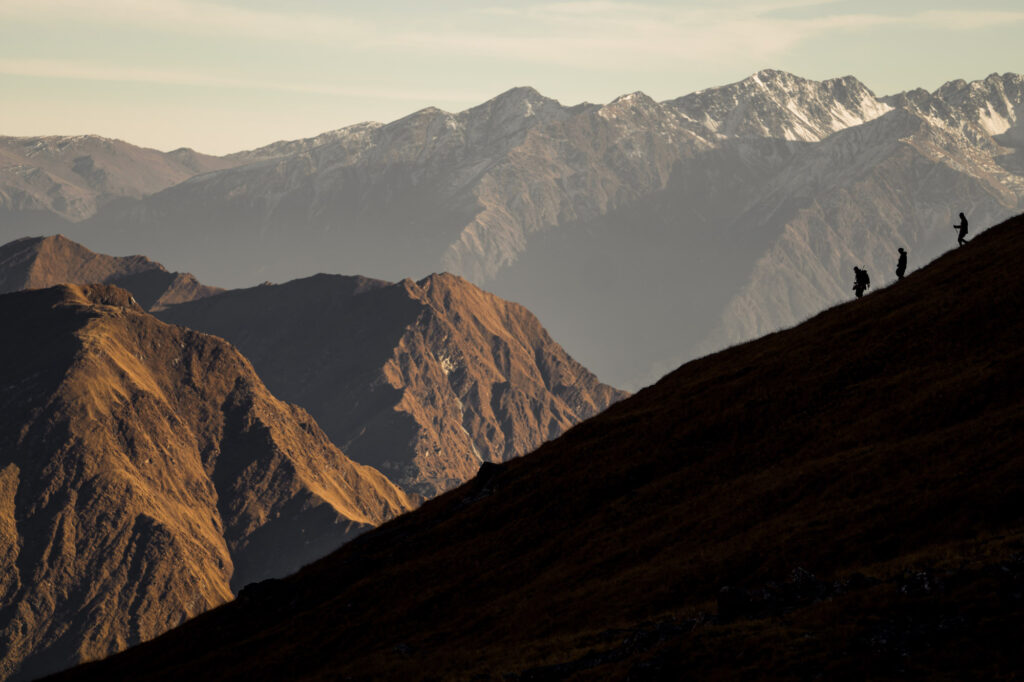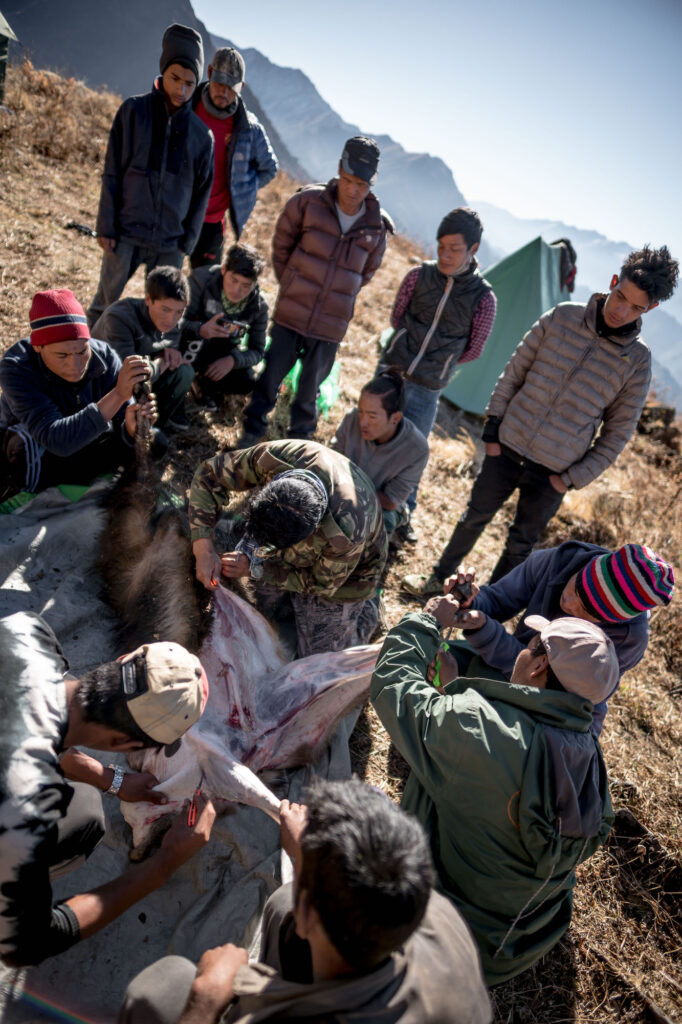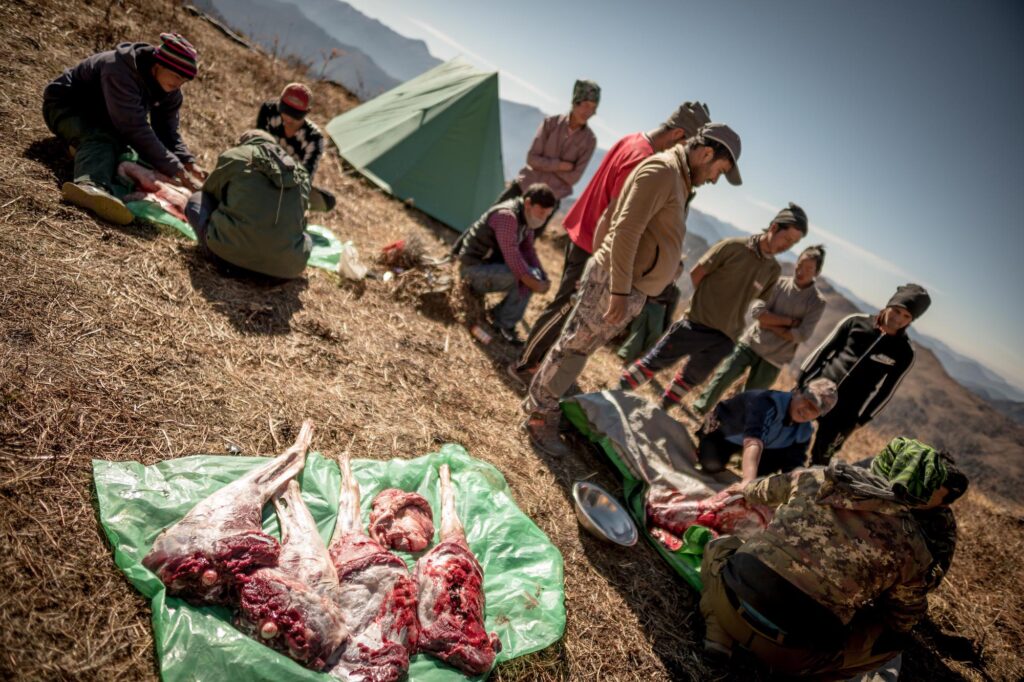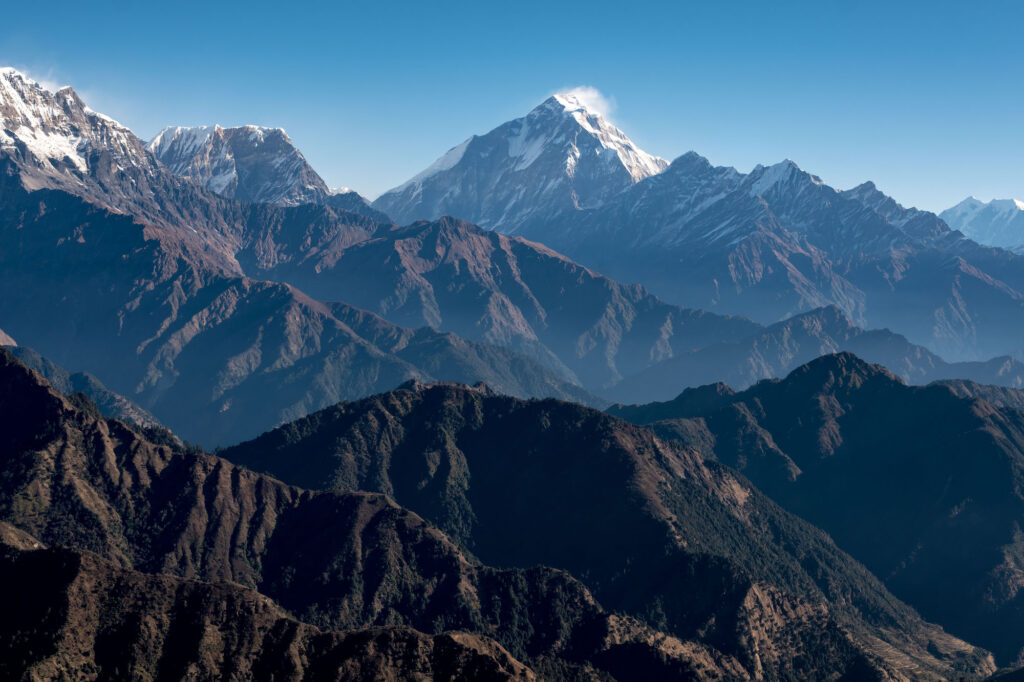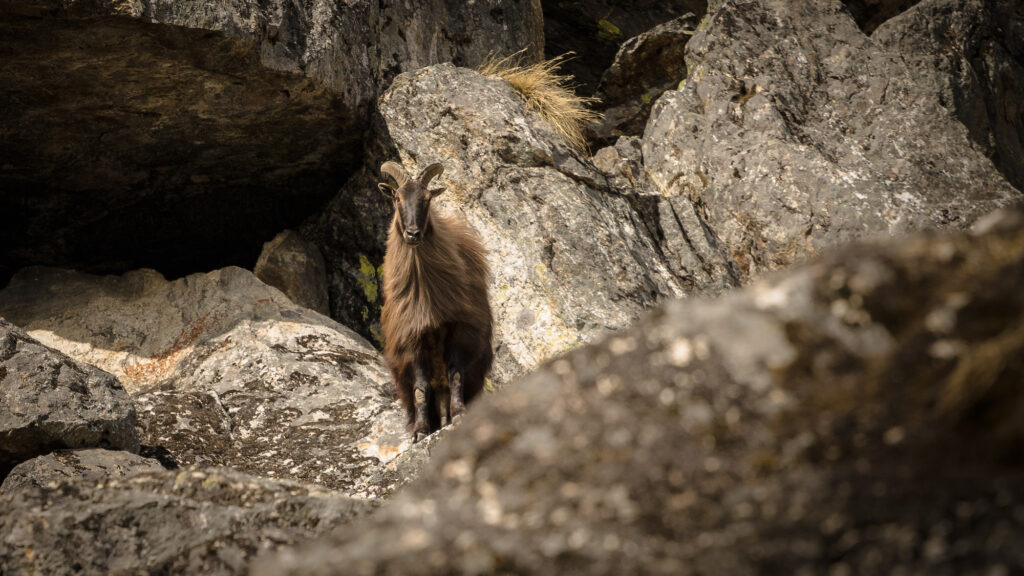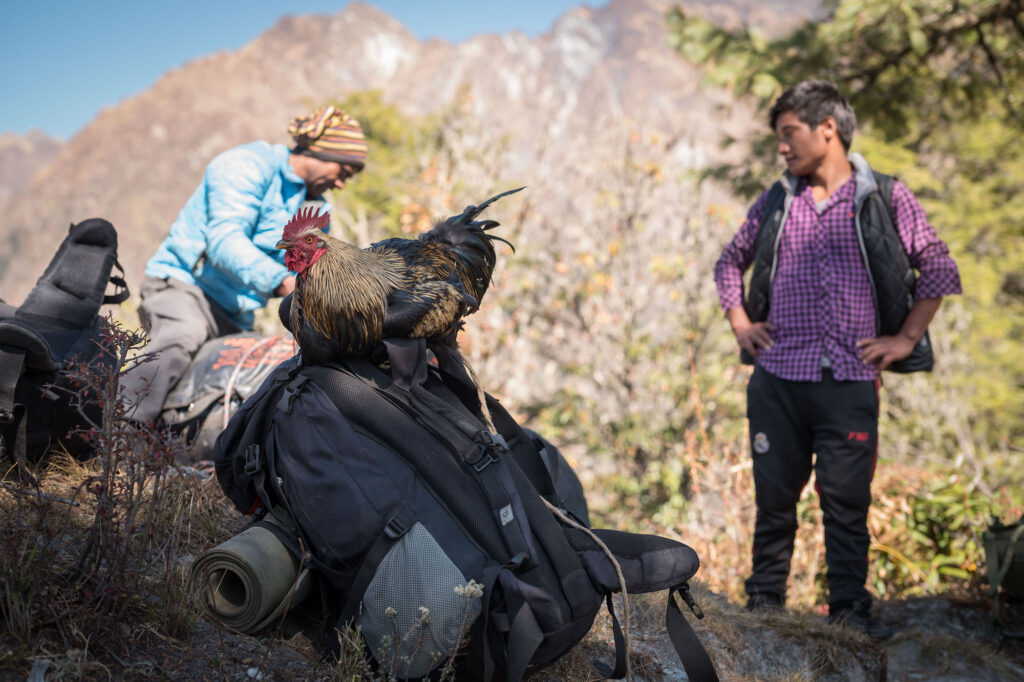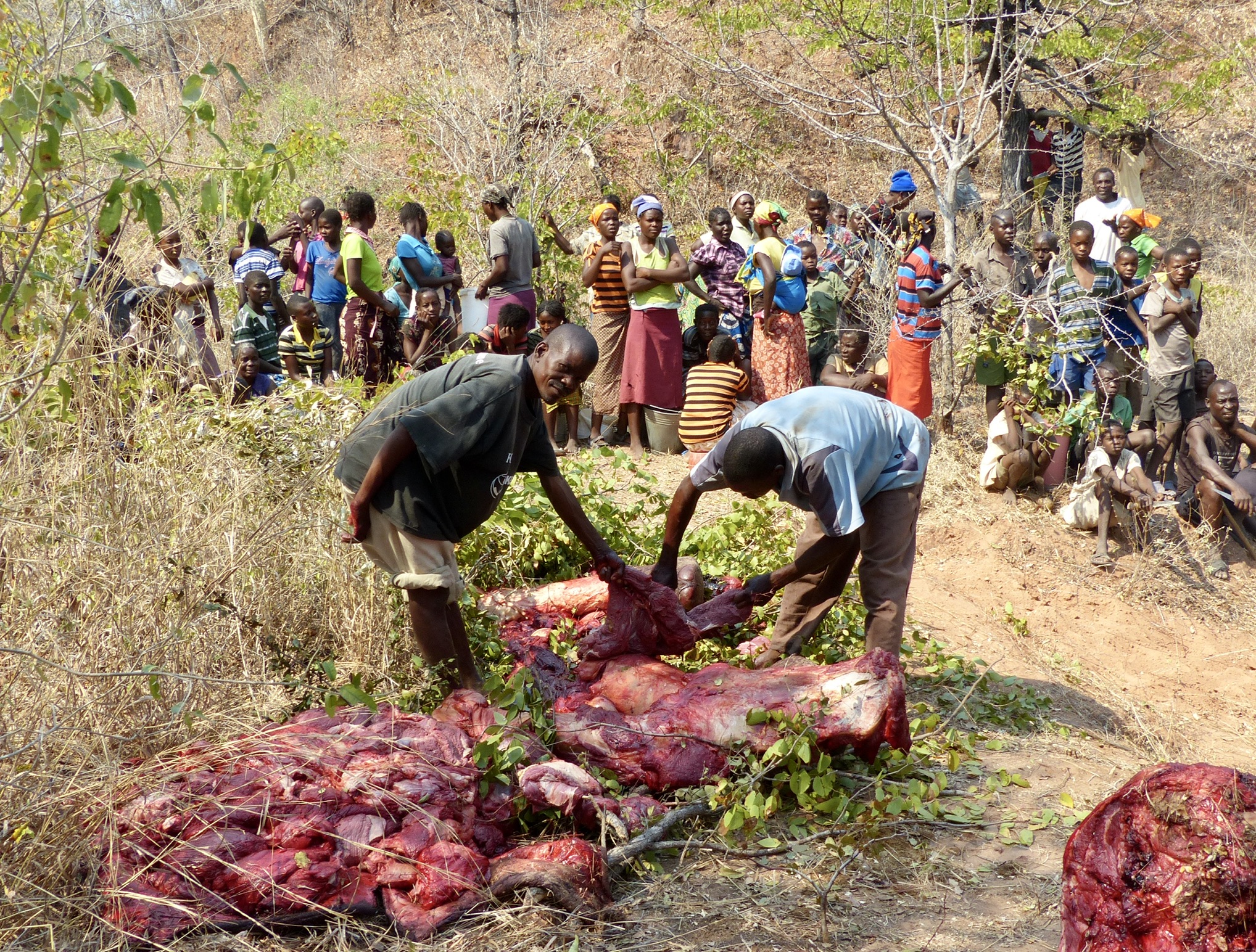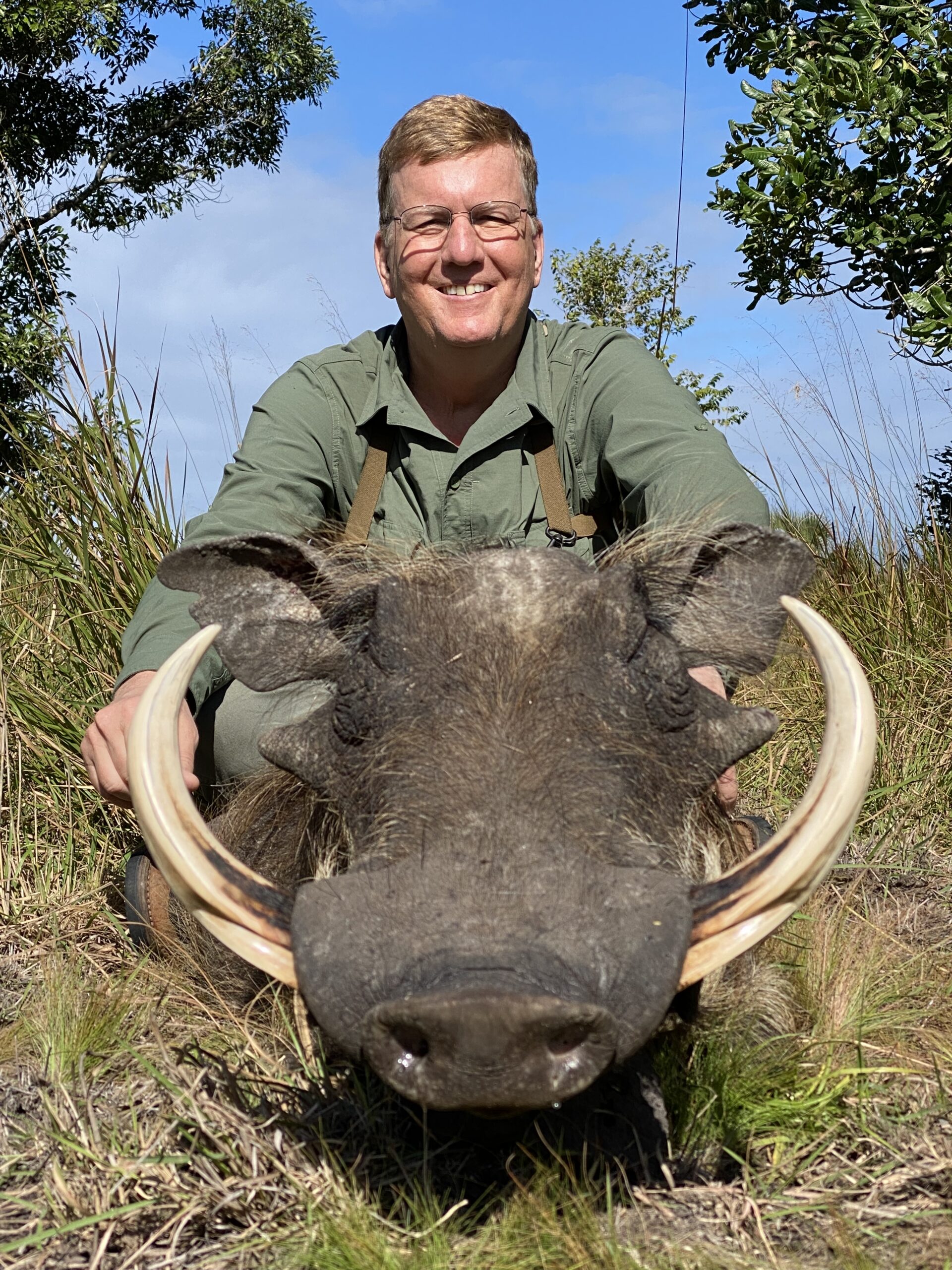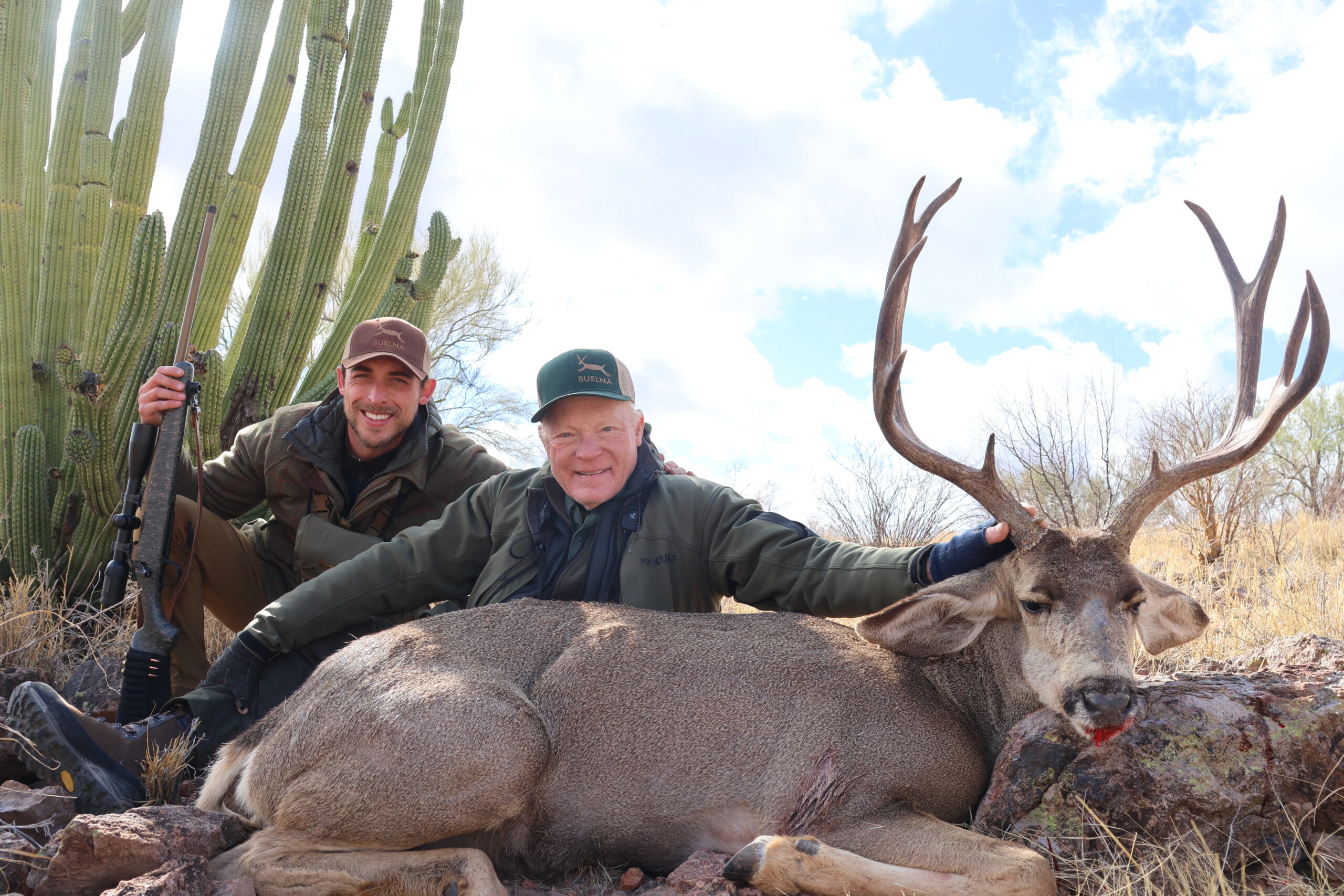by Simon K. Barr

My endeavour of the highest hunt in the world strangely had its origins in Nebraska, one of the flattest places I have visited. There, at Hornady’s hallowed headquarters, a bizarre looking creature adorns the walls – a blue sheep or ‘bharal’ as they are also known locally in the Himalaya.
A chance meeting with seasoned Danish big game hunter Jens Kjaer Knudsen, opened my eyes to hunting the species in the Nepalese Himalayas and recommended my outfitter, Global Safaris Nepal.
When hunting Kyrgyzstan for mid-Asian ibex, I’d suffered from altitude sickness and knew no matter how fit I was, I was indefensible to lack of oxygen and the dangerous landscape. In Nepal we would be truly cut off from the outside world, and at altitudes of 18,000feet there was a lot that could go wrong.
We had two days’ acclimatisation in Kathmandu, our first mission was to get our rifles and ammunition cleared – no mean feat in a country where it is illegal to own a rifle. We retrieved our rifles from the airport, then spent much of the day at the Governor of Kathmandu’s offices collecting 10 stamps of approval.
Two days later, we loaded up and headed to Kathmandu the airport, where after a Tetris-like pack of equipment into the helicopter, we set off. Landing at 10,000ft was a shock – the air was thin, and breathing was laboured for us, but less so for the team of 22 men who met us at the make shift helipad. Sherpas, scouts, guides, cooks, porters and of course, a skinner. Our outfitter, Samsher Parajuli, was also with us, as were two government game wardens.
There was little time to waste on looking at our surroundings. Once the porters had loaded up, we set off quick-smart, heading downhill – the plan was to spend our first night camping at around 8,500feet to acclimatise before we moved back uphill to start looking for animals. That first day’s walk, which wasn’t all that long and it filled me with unease. My lungs burned, and my legs ached, the lactic acid boiling my muscles.
Our guide, Man Punmagar, was astonishing. Aged 42, he’d been a poacher, and a Buddhist. He’s now a Christian, but has two wives, and was as tough as they come. Man was small and nimble, and suffered none of the problems of altitude. Not only that, but not a man among the team wore proper boots or crampons.
We started our climb at sun up the following day and had been warned it would be a big push. We climbed – not hiked – 4,000ft in total. The terrain, was unforgiving. By the time we arrived at camp two, nearly twelve hours of climbing behind us, everything ached and burned. What had I let myself in for? Nausea, headaches and dizziness were plaguing me, a sure sign of altitude sickness.
Five am the next day came around and I had an extremely firm word with myself. The pleasing sound of tahr chirping sweetly echoed around camp as the sky lightened. I grabbed my rifle from my tent, quietly loaded, and, following Man, set off. On rounding the nearest corner to camp, we saw them not far off. We were within a rare 100m of the animals, and, after a short observation, Man pointed out a mature male. “This one,” he said. It took a few precious minutes to work out which one that was. I lined up the crosshairs of scope, tried and struggled to breathe deeply, and squeezed the trigger. The bull tahr dropped in seconds. Not only had the hunt itself been short, but it was close to camp, a huge blessing by all accounts.
There was no time for delaying now, as time was moving fast and we had to make our next camp by nightfall. Another knife edge, fear filled five-hour climb, achieving another 2,500ft, took us to camp four where I collapsed, drained of all energy and will. I had to resign myself to the possibility that I might not manage the next leg of the trip.
Fortunately, I had a day’s grace to recoup and recover. Matt Fowler, an American hunter who was part of the expedition was hunting for the day, and I could rest at camp. The sight of the party returning with a blue sheep was just the thing I needed to spur me on.
My head pounded as I packed up my rifle at five am the next day with the cold wind biting. As we rounded a bend, we spotted a group of animals, some 12 of them, so we stopped to get a better look.
Glassing through my binoculars my heart sank. There was not a mature ram among them. It was now midday, and after seven hours of hard climbing, we had nothing and with less than five hours of daylight left we’d have return over the mountain.
The only route open to us was through a boulder field. With each step, the ground moved, setting off pebbles and rocks in a mini-avalanche below us. Finally, we summited at 15,000ft. My relief turned to excitement as the sun was setting. A group of blue sheep were calmly grazing – five females and two mature males, perhaps a kilometre away from camp. I retired to my sleeping bag almost as soon as we got there, after twelve gruelling hours.
We left at five am again, the scout having moved on ahead of us. As we caught up with him, he explained that the sheep were 800m away from us and in an awkward position – the wind was behind us and we would need to try to get around them to find a shooting position.
We descended quickly, dropping below our hard-won altitude of 15,000ft, and then climbing back to 15,600ft. Now on a grassy plateau, we moved cautiously and silently, hoping to find a good position to take a shot. The sheep were moving out of the bowl, and if I didn’t take a shot in the next few minutes, we’d lose them altogether.
I set myself up, finding a solid position from which to shoot. Time was pressing now, and I ranged the shot, using my Leica HDB rangefinder binos. At this stage, guesswork would be pointless – we were at 15,600ft, so the barometric pressure would skew the bullet’s normal trajectory, as would the angle, which was 17 degrees, and the cold. The distance, of 378 yards, would be hard enough to do with hold-over under normal circumstances, but here, there was little chance of getting it right. I breathed – the HDB gave a reading in less than a second, telling me I should allow 16 clicks on the elevation. By this stage, the ram had appeared. I breathed and took my shot. I reloaded immediately. The 200gr Hornady 300 Win Mag ELD-X Precision Hunter cartridge did all I asked of it. The ram dropped after a few paces, and didn’t move again.
For all the fear, sickness and exhaustion, I’d managed to place the shot perfectly, taking out both lungs and the top of his heart, killing him cleanly. He was hefted into a basket, the strap of the basket secured around the sherpa’s forehead, and we made our way back to camp, where the ram would be butchered for his meat. This adventure provided an experience of a lifetime. It’s something I will be able to look back on, knowing that I overcame some of my darkest moments, my worst fears, and for that, I will always be grateful.

